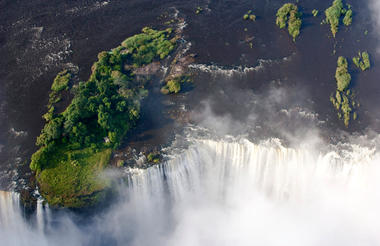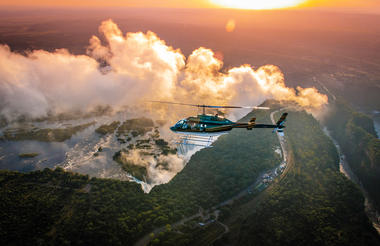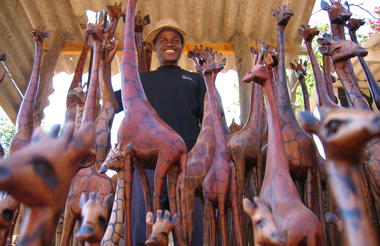Currency
From June 2019 the Zimbabwean Dollar (Z$) was reinstated as the official currency of Zimbabwe. However, for tourism purposes, cash in US Dollars is generally the accepted currency. US$ Dollar notes (2007 Series onwards), and Visa and MasterCard are accepted. Always have enough US$ cash available in smaller denominations in the event where ATM's and Credit Card facilities are not operational.
Visa
Fees for Visitors to Zimbabwe who are eligible to receive their visa on entry
Europe and USA: US$ 30.00 for single entry/ US$ 45.00 for double entry.
UK & Ireland: US$ 55.00 for single entry/ US$ 70.00 for double entry.
Canada: US$ 75.00 for single entry/ double entry to be obtained from local embassy prior to travel
Some visitors need to apply for visas before arrival - please check with your Embassy, Zimbabwe Government Visa Requirements. ALWAYS have cash available in the correct US$ amount at ALL ports of entry.
All travelers entering Zimbabwe are required to complete the Zimbabwe arrival form online the day before arrival. Please click on this link to fill in the form: https://evisa.gov.zw/app/index.html#/standby-kiosk
Useful Links: https://africaseden.travel/tourist-visa-info/
Internal Flights and Transfers
Due to the remote areas the camps and lodges are based in, transfers between camps may take place by boat, train, game drive vehicle or light aircraft.
Road transfers to and from Hwange Safari Lodge/ Hwange Main Camp have scheduled departure times, any transfer outside these times will attract a surcharge.
Departure Taxes
International departure taxes are included in the scheduled flight rates. However light aircraft transfers from Victoria Falls Airport to Livingstone or Kasane require an International Departure tax of US$35 per person & AIDF Levy of US$15 = US$50 per person to be paid in cash.
Domestic departure taxes are payable in cash at the airport, for any flights departing internally from any registered, manned airport. These include Harare, Bulawayo, Kariba, Hwange and Victoria Falls Airport. The amount is US$10 departure tax + US$5 AIDF Levy = US$15 per person. We recommend small denominations for easier and quicker transactions as change is not always available. Traveller’s cheques and credit cards are NOT accepted.
Weight & Luggage Restrictions
See Booking Information
It’s hard not to be dramatic when describing the grand beauty of Mana Pools. This park in the north of Zimbabwe is a unique oasis often described as a ‘garden of Eden’. It is a remote gem that leaves you awed and humbled by the landscape, a landscape that feels both eternal and wonderfully alive. Mana Pools is a designated UNESCO world heritage site.
The name Mana means four in the Shona language and comes from a series of four pools, remnants of oxbow lakes that run parallel to the river amongst the ancient floodplains for which Mana is famous. These wide green floodplains dotted with giant Albida trees edge the Zambezi river and offer breathtaking views of the purple-hued escarpment rising dramatically across the river. The floodplains attracts huge amounts of wildlife, especially in the dry season, and you’ll quickly get the sense of being one of a privileged few to experience this wild place.
Mana is known for its immense bull elephants and the sight of an elephant standing upon its hind legs to stretch for the seedpods of a giant tree upon the floodplain has become iconic. Mana raises goosebumps and leaves you with vividly remembered impressions: the sound of clashing ivory echoing across the valley while two massive elephant bulls fight; or sunrises that coax the smell of overnight dew out of the floodplains.
Mana Pools is not all about elephants; you can expect to see large numbers of plains game and if you are lucky the predators that follow them. Large congregations of grazing animals can be seen on the floodplains and you would be unlucky on a three-day stay to not see a predator.
Mana offers a choice of permanent camps, each with a unique perspective. Mana is wonderful location for walking and canoe safaris offering overnight stays in mobile, tented camps.






Lake Kariba is a vast manmade lake stretching for over 5000 square kilometres, and is 220 kilometres long and over 40 kilometres in width. It is one of the largest dams in the world. The dam was constructed on the Zambezi River along the border between Zimbabwe and Zambia and is owned by the two countries. By flooding Kariba Gorge and the Zambezi River between 1958 and 1963, Kariba Lake was born. One of the world’s largest animal rescue attempts took place in the area, under the name “Operation Noah”. The team rescued more than 6,000 animals and relocated them to Matusadona National Park and the surroundings of the lake. The lake generates hydro electric power for both countries and has a very good commercial kapenta fishing industry. The sheer size of it makes it easy to forget it’s a dam and in certain places it almost feels like an ocean. The name “Kariba” is derived for the Tonga word karive, meaning “trap”. It is well named as the river has been trapped by the dam across the gorge.
Lake Kariba is a very popular destination for both locals and tourists. It offers spectacular views, walking safaris, game drives, fishing for the feisty tiger fish, as well as canoeing. This large man-made lake is bordered by some of the finest parks on the planet and offers a remarkable safari and wildlife experience. Around the lake, the healthy populations of hippo and crocodiles dot the waters and the sun-bleached trees that drowned all those years ago are still standing strong, breaking the surface to become birdlife magnets, especially for fish eagles, cormorants and other water birds. Sites to see within Kariba include the dam wall - a feat of engineering.
A particularly atmospheric and beautiful lake, Lake Kariba enchants with spectacular sunsets and dramatic vistas. Most of all, you will remember the smells of Africa. The dust of the day, the moisture of the lake and, most evocative of all, the smell of advancing rain.
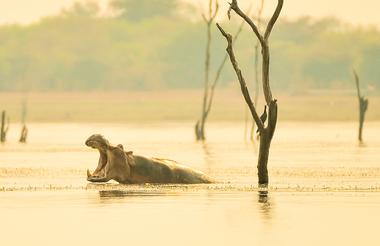

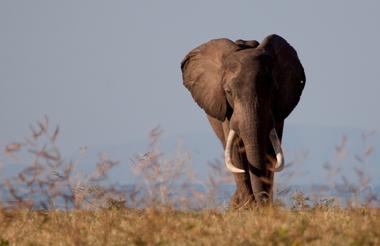
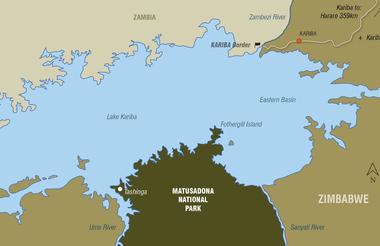
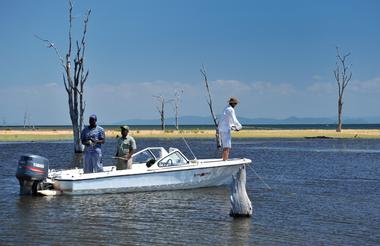
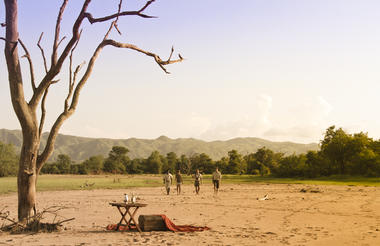
If you have dreamt of an Africa with expansive plains and wide horizons, where elephant and buffalo traipse in huge numbers towards waterholes and giraffe browse from flat topped acacias while a blazing sun sets behind them… you can find it in Hwange.
As Zimbabwe’s largest national park, Hwange has a sizeable reputation that it wholeheartedly deserves.
The sight of hundreds, if not thousands of elephants and buffalos streaming towards you as you sit at a waterhole is indescribable. There is nothing like the sound of elephants' peaceful rumbling or the deep thundering of buffalo hooves on hard ground when they spook, wary of lions that may lie in wait.
This sight and sound of a waterhole in the midst of pristine wilderness visited by huge numbers of animals is typical of Hwange. Beyond the sights and sounds, the feeling of Hwange is what will remain with you: awe and peace from spending time in a true, preserved wilderness.
Hwange’s diverse habitats mean that it offers large numbers of desert adapted, plains and woodland animals. The famed elephant population is one of the largest in the world and it has plentiful predator populations such as lion, leopard and cheetah. Hwange also boasts one of Africa’s last strongholds of endangered African wild dogs.
Hwange offers the opportunity to see a variety of rare antelope such as eland, sable, roan and if you are lucky the desert-adapted oryx (gemsbok).
Apart from the variety of species and its beautiful setting, Hwange is unique in its ease of access. The park begins a mere hour from Victoria Falls and there is a range of accommodation across every price point. The North typically offers a mix of private lodging and National Park chalets, as well as a well-maintained road network. Hwange’s more southern concessions are generally private, offering luxury lodges and camps.
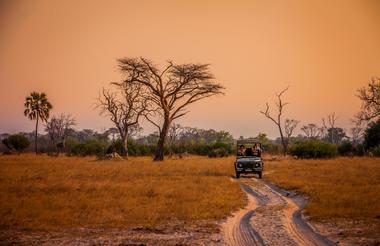
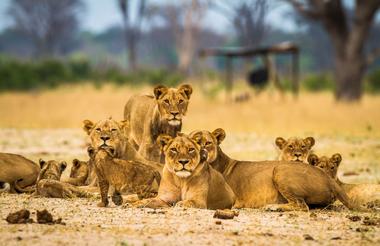
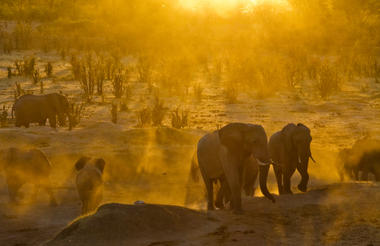
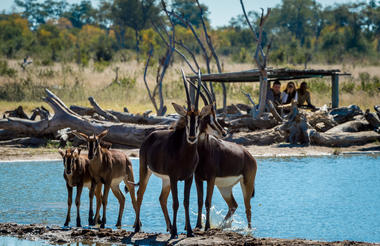
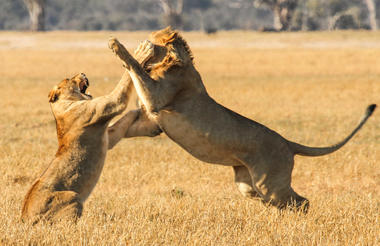
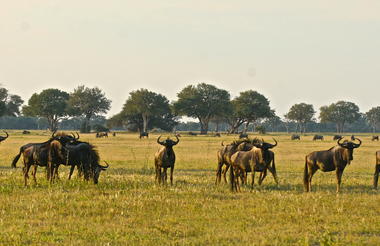
At Victoria Falls, the earth splits open and swallows one of Africa’s greatest rivers, the mighty Zambezi, creating the largest sheet of falling water on earth. As the water hits the narrow depths of the Batoka Gorge beneath, it blasts a cloud of mist skywards, lending the falls their local name ‘mosi-oa-tunya’ (the smoke that thunders). When the Zambezi is its fullest, the mist hangs a permanent raincloud above the falls, showering visitors on even the sunniest of days and visible for miles around.
Above the falls on the upper Zambezi, boats cruise the tranquil water at sunset while the distant spray catches the fading light downstream. Below the falls, the Batoka Gorge’s rocky walls funnel the lower Zambezi into a chain of world-class rapids, prime for white water rafting.
Aside from being a UNESCO world heritage site and a natural world wonder, Victoria Falls also forms a natural border between Zimbabwe and Zambia. The falls can be seen from both countries, and for the most part the same activities are offered on both sides, from helicopter scenic flights to village visits and souvenir shopping.
Whether your idea of getting away from it all is a relaxed high tea in colonial grandeur or a heart-stopping bungee jump off a bridge, Victoria Falls keeps both the faint of heart and the most insatiable of adrenalin junkies busy for days.
From Zambia, a side on view of the falls is on offer with views into the Batoka Gorge, as well as the possibility of perching yourself at the edge of the falls on the vertigo-inducing Livingstone Island.
From Zimbabwe, you’ll get a full-frontal view of three quarters of the falls’ 1.7km wide curtain of water from viewpoints and footpaths meandering through a rainforest kept hot and humid by the spray of the falls.
